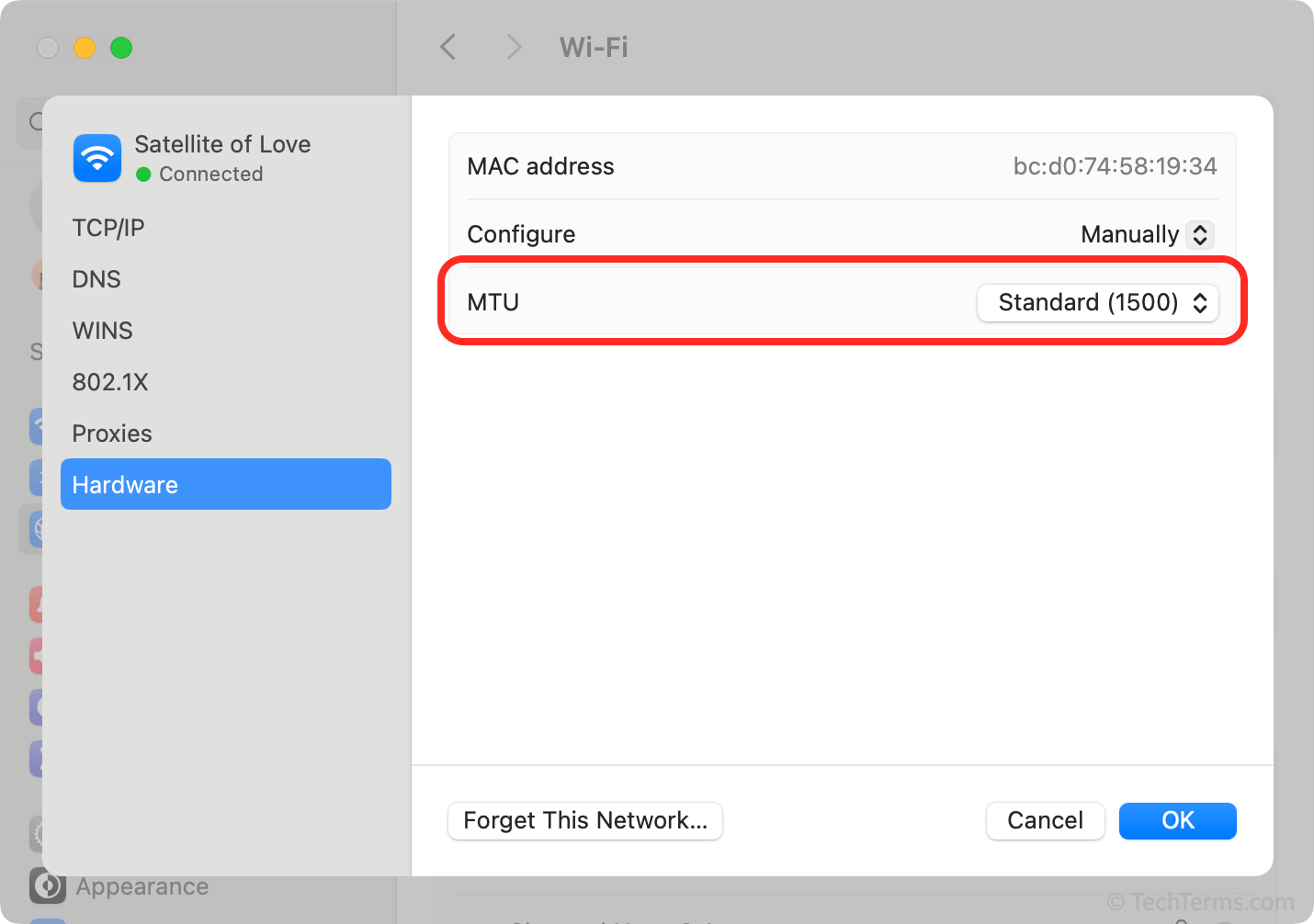MTU
Stands for "Maximum Transmission Unit."
A network connection's MTU setting determines the largest size data packet that can travel over that connection. Different network connections support different MTU sizes and have their own default values, but networking devices may also set their own MTU size in their network settings. The most common default MTU value for home networks and TCP/IP internet connections is 1500 bytes, based on the standard MTU for Ethernet networks.
A data packet's MTU value combines the size of its header information and its data payload. Larger MTU values allow more data to fit in each packet, reducing the proportional amount of data dedicated to overhead. However, smaller MTU values can reduce network latency since it takes less time to send a complete packet — all other conditions being equal, a device can receive and process two 600-byte packets before one 1500-byte packet finishes transferring.
When a device tries to send a data packet that is too large and exceeds the connection's MTU, that data packet first needs to be broken up in a process known as fragmentation. The receiving device reassembles these packets back into their original size, but this adds extra overhead and can slow down data transfers. Some protocols, like IPv6, do not allow fragmentation at all — instead, routers will drop packets that exceed the MTU size and send ICMP requests for smaller packets from the device that sent them.

 Test Your Knowledge
Test Your Knowledge